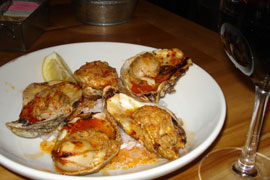Journeys with Carole Kotkin
The New Orleans Gourmet


Carole Kotkin is a syndicated Miami Herald food columnist and co-author of “MMMMiami – Tempting Tropical Tastes for Home Cooks Everywhere.” She is also the manager of The Cooking School at The Ocean Reef Club, food editor for “The Wine News” magazine, and co-host of “Food and Wine Talk” on southfloridagourmet.com.

New Orleans is one of the world’s best restaurant cities, and remains so even after the disaster caused by hurricane Katrina. This is a city where it is said “eating out comes second only to breathing.” So as New Orleans fights for renewal, it makes sense that restaurants would lead the way to encourage tourism. There are only a few remnants of the devastation in the downtown area and the French Quarter, and the city has been slowly rebounding with the number of restaurants increasing from 809 before Katrina to 817 at this time.

Great restaurants, such as Restaurant August, Besh Steak at Harrah’s, and Brennan’s have re-opened to enthusiastic crowds, and new restaurants such as Seven on Fulton, Cochon, Luke, and Riche (a restaurant in Harrah’s Hotel by celebrity chef Todd English) are proving that New Orleans is alive and well. The City has a reputation for cherishing its traditional food, but a new generation of chefs is bringing innovation to the forefront. One can still experience the pomp of New Orleans’s legendary restaurants like Brennan’s, but young New Orleans chefs have been doing for Creole and Cajun cooking what jazz musicians have done with their music: Improvise on the essentials of tradition.
It was here in New Orleans that the French, American Indian, Italian, Spanish, German and African American palates came together and formed the basis for Cajun and Creole cooking, believed by many to be America’s greatest regional cuisine and the only indigenous American cuisine. It’s a cuisine with quite a history. Founded in 1719 as the commercial hub for the Mississippi River, New Orleans became a center of fine cooking. The Creoles and the Cajuns, two ethnic groups with separate heritages, dominate Southern Louisiana cooking.
Continue reading this article for restaurant reviews and more.


